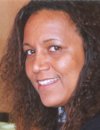Creating the space to negotiate difference
28 October 2002 Prominent architectural critic and theorist Lesley Naa Norle Lokko was the speaker at this year's annual Vivienne Japha and Len & Gunnel Hicks Memorial Lecture.
Prominent architectural critic and theorist Lesley Naa Norle Lokko was the speaker at this year's annual Vivienne Japha and Len & Gunnel Hicks Memorial Lecture.
TRUTH, Lies and Stereotype was the title of the recent Vivienne Japha and Len & Gunnel Hicks Memorial lecture hosted by the UCT School of Architecture, Planning and Geomatics.
Prominent architectural critic and theorist, Lesley Naa Norle Lokko spoke at length about the complex relationship between race, cultural identity and the making of space. Lokko is currently Course Director of the Masters programme in "Cultural Identity, Globalisation and Architecture" at the Bartlett School of Architecture at London University College.
The lecture was structured as a 10-part narrative that featured Lokko's own experiences involving “raceâ€, architecture and space, and the lines that were drawn and are still drawn to separate the centre from the periphery.
“I liked very much the idea of turning the lecture into a series of stories, or tales, invoking the idea of the tension between the spoken and the written,†she explained, indicating that this method allowed her to “cover fairly large ground in space and time without too much connecting explanation.â€
According to Lokko, the 10 tales were useful because they gave her scope to operate at various scales, which in turn allowed her to illustrate different historical times and allude to 10 varying interpretations of the relationship between race and space.
In her introduction Lokko explained that the terms race, culture, identity, history, architecture and the making of space come with a complex and often contradictory mixture of fact, fiction, myth, truth and lies. Her intention in this instance was to look at the identities that are constructed around the concept of race and at how these identities and histories find expression – or not – in architecture and the built environment.
“In tonight's talk, I am interested in one thing – what is the architectural expression of difference?â€
Lokko launched her lecture with a brief overview of the discourse of race and culture. Her conclusion was that race does not stand by itself, while often used to classify a group of people, with cultural ties or similar physical characteristics, its meaning is clearly amplified when it is brought forward into the cultural or political arena that define Europeanness.
“What we are really talking about are non-European, non-Western, non-white cultures and their relationship to the powerful centre of European culture which has historically tried to regulate others to the peripheries from where it perceives them to have come,†she concludes.
Lokko explained that issues around race in the field of architecture raised problematic questions, because "who is a black architect?" She argues that answering the question is difficult because a black architect is generally identified by their physicality, not by the cultural expressions that should resonate from their work. In other words what does or should the work of a black architect look like? What does black or “otherness†look like? It is around this issue that Lokko's 10 tales unfolded as they echoed a frustration at being confined to culture that is not her own, grappling to express or find space to express “otherness†and the stereotype of “othernessâ€.
Her tales did not propose to answer any questions but rather echoed the sentiments of Stuart Hall, whom she had referred to earlier in the lecture.
“The world is now full of people who belong to more than one world, speak more than one language, (literally and metaphorically) inhabit more than one identity, have more than one home; who have learned to negotiate and translate between cultures and who, because they are inevitably and completely the product of several interlocking histories and cultures, have learned to live with, and indeed speak from, difference. This is their language, their story: meaning is not shared, it is always negotiated.â€
 This work is licensed under a Creative Commons Attribution-NoDerivatives 4.0 International License.
This work is licensed under a Creative Commons Attribution-NoDerivatives 4.0 International License.
Please view the republishing articles page for more information.
Related
Alderman Owen Kinahan (1955–2026)
06 Jan 2026
Celebrating UCT’s outstanding Thuthuka results
29 Dec 2025










